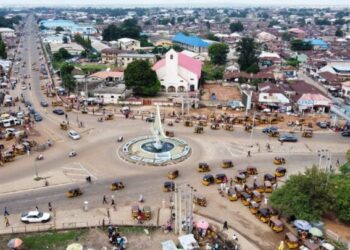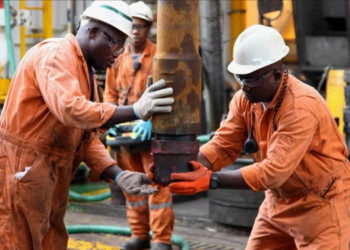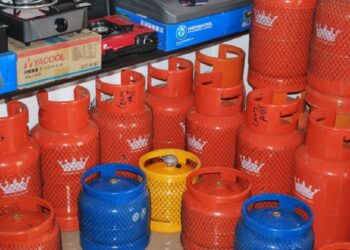Article summary
- The manufacturing sector’s contribution to Nigeria’s Gross Domestic Product (GDP) between 2018 and 2022 fluctuated between 8% and 9%.
- In the past five years, the sector contributed N32 trillion to the economy out of the total N358.32 GDP.
- Experts and stakeholders in the sector have ascribed the causes of the stagnation to high energy costs, forex scarcity, high-interest rates, and inflation in raw materials and production inputs.
- The new federal administration has been advised to prioritize the manufacturing sector by putting in place policies that will promote both local and foreign investment.
The contribution of the manufacturing sector to Nigeria’s Gross Domestic Product (GDP) has stunted in the last five years.
National Bureau of Statistics (NBS) data revealed that the sector contributed around N32 trillion in the last five years.
According to the NBS, Nigeria’s GDP for the years between 2018 and 2022 stands at 358.32 trillion of which manufacturing contributed a meagre N32 trillion. This represents just 9% of the country’s economy.
Further analysis from the NBS data showed that in 2018, Nigeria’s GDP was N69.7 trillion of which the manufacturing sector contributed N6.4 trillion. For 2019, the country’s GDP was N71.38 trillion and the manufacturing industry contributed N6.47 trillion.
For 2020, 2021 and 2022, the sector contributed 8.99%, 8.98% and 8.92% respectively to the country’s economy.
Expert’s Reaction.
Experts and players in the sector have decried the high energy cost, forex scarcity, inflation in the price of raw materials and inputs, and high lending interest rate among others as responsible for the industry’s current malaise.
The President of the Nigeria Association of Chamber of Commerce, Industry, Mines and Agriculture Mr Ide John Udeagbala noted that a 9% average contribution to national output indicates the country is falling below its industrialization goals.
According to him,
- “I think that a situation where less than one-in-ten products produced in the Nigerian economy is the outcome of an industrialized process does not bode well for our economic growth and development objectives. This is because industrialization is well-established as a pathway to development.
Although Nigeria has an advanced services sector, an average manufacturing contribution of 9% to national output (GDP) indicates that we are falling well below our industrialization goals.
The Director-General of the Manufacturers Association of Nigeria (MAN) also commented on the worrying phenomenon thus “Conceptually, manufacturing is unarguably the backbone of national economic development.
- “It is countries that can transform their raw materials into a wide range of furnished goods and add prosperous value. Beyond the role of the sector in the domestic economy, manufactured exports expand the scope of trade, commerce and foreign exchange inflow.”
The Way Forward
Stakeholders at the Equipment and Manufacturing West Africa (EMWA) 2023 tasked the Federal government to prioritize the manufacturing sector through policies that encourage local and foreign investment in the sector.
Speaking on the sidelines of the conference, Amb. Joseph Oru, the event director remarked that “Despite how the election year has turned out to be and with a new government in place, I urge them to come out, collaborate with the private sector and put manufacturing at the forefront of their policies to build a better Nigeria”
Recent Development
In the just released NBS report on Gross Domestic Product (GDP) for the first quarter of 2023, the manufacturing sector saw a slump in growth from 4.28% in the preceding quarter to 1.61%. However, its contribution to the total economy was 10.13% higher than the 8.40% recorded for the previous quarter.

























